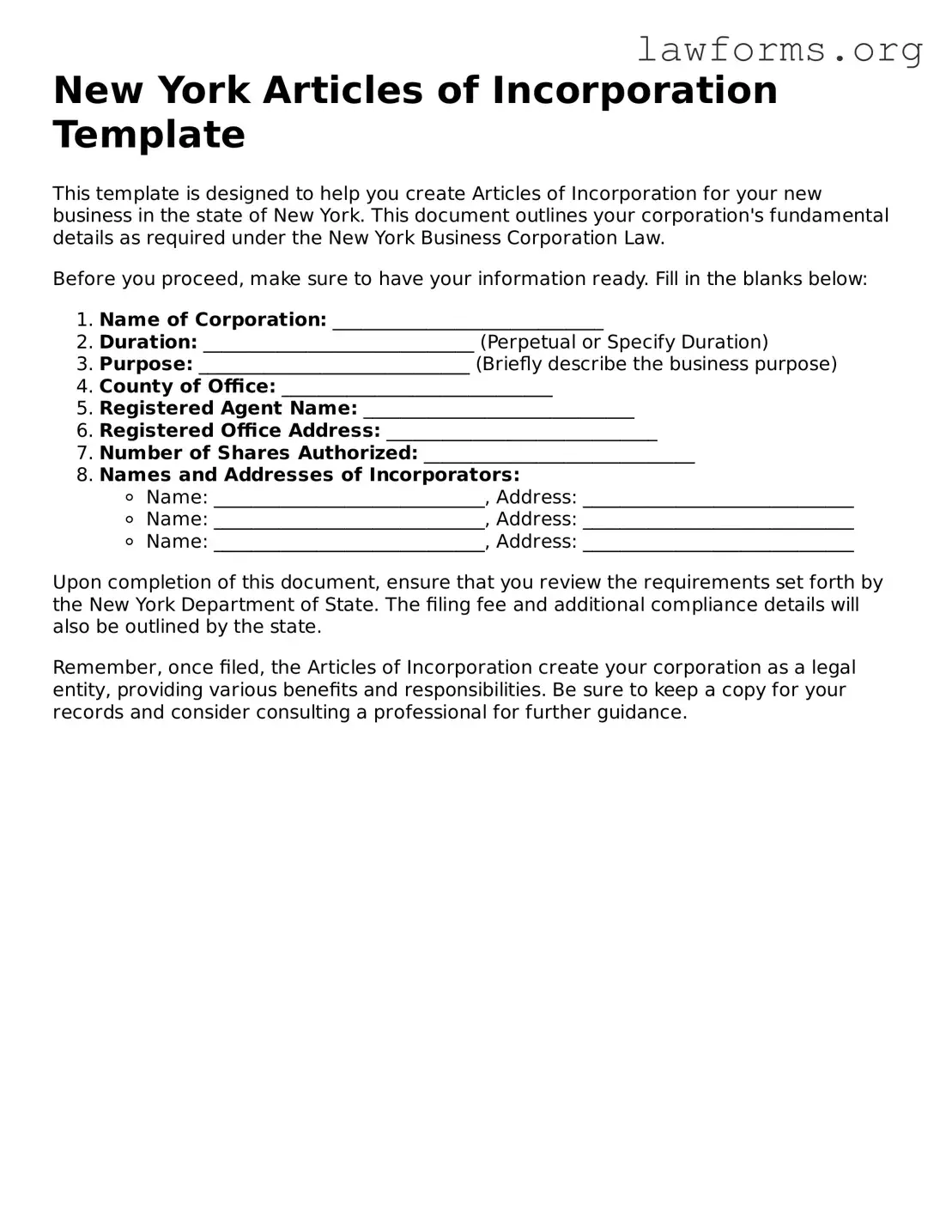New York Articles of Incorporation Template
This template is designed to help you create Articles of Incorporation for your new business in the state of New York. This document outlines your corporation's fundamental details as required under the New York Business Corporation Law.
Before you proceed, make sure to have your information ready. Fill in the blanks below:
- Name of Corporation: _____________________________
- Duration: _____________________________ (Perpetual or Specify Duration)
- Purpose: _____________________________ (Briefly describe the business purpose)
- County of Office: _____________________________
- Registered Agent Name: _____________________________
- Registered Office Address: _____________________________
- Number of Shares Authorized: _____________________________
- Names and Addresses of Incorporators:
- Name: _____________________________, Address: _____________________________
- Name: _____________________________, Address: _____________________________
- Name: _____________________________, Address: _____________________________
Upon completion of this document, ensure that you review the requirements set forth by the New York Department of State. The filing fee and additional compliance details will also be outlined by the state.
Remember, once filed, the Articles of Incorporation create your corporation as a legal entity, providing various benefits and responsibilities. Be sure to keep a copy for your records and consider consulting a professional for further guidance.
